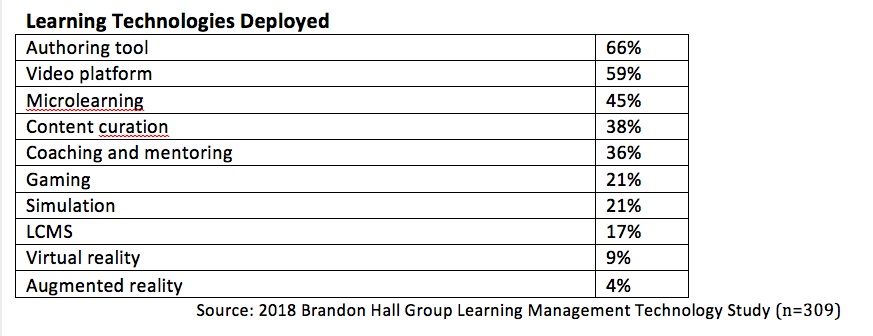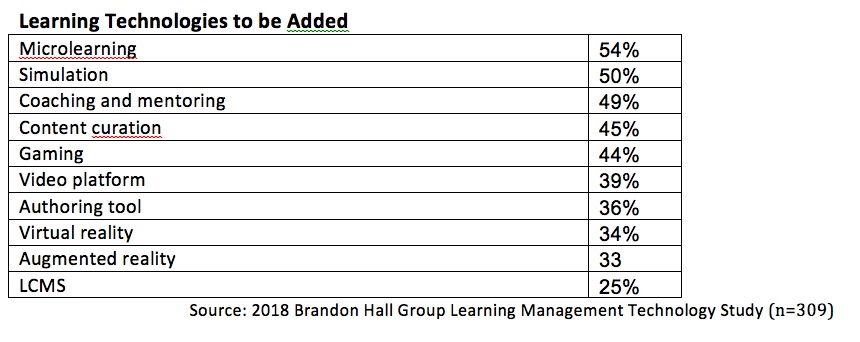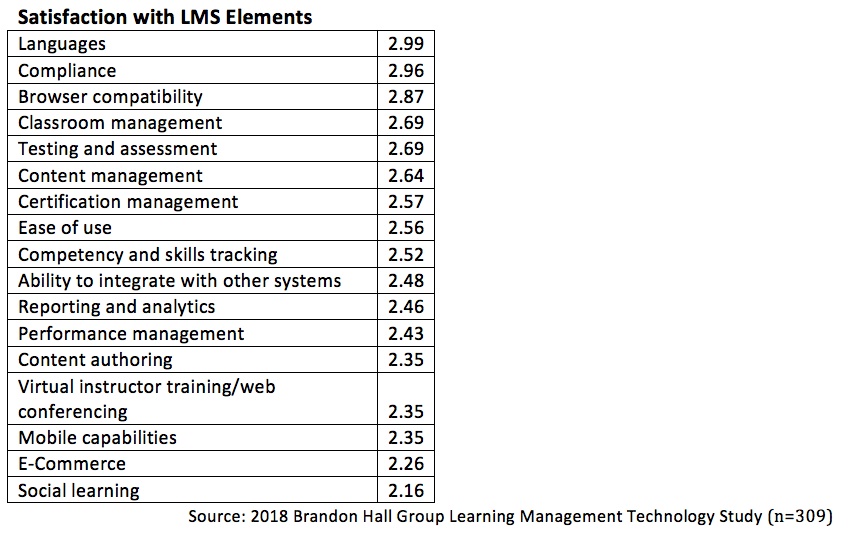In a relatively short period of time, the learning technology landscape has exploded from a set of well-defined tools, such as a learning management system (LMS) or authoring tools to a vast array of solutions aimed at delivering a variety of learning experiences and content across a spectrum of devices and media. Organizations used to have a single line item in the budget for technology, but today there could be dozens of platforms deployed simultaneously.
The complexity of the technology landscape means organizations must be highly prepared to navigate if they want to be sure they deploy the best solutions to execute their learning strategy. Unfortunately, nearly two-thirds of companies have either a poorly defined technology strategy, or, worse, no strategy at all.
The Learning Landscape Is More Complex
More than 25 percent of those companies that use an LMS actually employ more than one. In fact, 7 percent of these companies have more than three LMS platforms in place. This obviously adds to the complexity of the learning environment even without other types of technology in the mix.
Increasingly, however, it is not just LMS that must be managed. Companies deploy a host of ancillary, complementary,and auxiliary technologies to meet their learning needs.

Brandon Hall Group’s 2017 Learning Content Study found that just 2 percent of companies do no internal development. While there are many ways to generate content, two-thirds of the companies in the 2018 Learning Management Technology Study use a proprietary authoring tool. We also see an abundance of technology aimed at a more modern learning experience, with about 60 percent of companies employ a separate video platform and 45 percent using a solution to deliver microlearning.
With growing interest in microlearning, gaming/simulations, and virtual and augmented reality, companies navigate a vast ocean of solutions to find what they need and manage they choose. Without a solid technology strategy, it is a daunting task.

More, Please
Organizations not only seek to augment their LMS with technology solutions, they also want the LMS itself to do more. Nearly three-quarters (73 percent) say it is at least somewhat important that their LMS be part of a larger suite of talent management solutions. This provides more seamless integration and data sharing with other platforms in the suite, and integration is one of the areas where companies say their LMS solutions are lacking.
In fact, none of the items we asked about scored higher than a 3 on a satisfaction scale of 1 to 4, including integration.

As stated, the results point to companies wanting their LMS solutions to do more. Despite being the buzzwords of the last several five years, mobile and social both get satisfaction ratings.
Not only is the technology not delivering, but the providers themselves have some improvements to make in how they work with clients. Companies want their LMS provider to be a true business partner a robust product roadmap (which illustrates the desire for more features and functions). Satisfaction scores for the providers are lower than for the technology itself.

The wish list of new technologies, as well as the satisfaction with current solutions and providers, indicates companies demand more from their learning technology. They want to be able to deliver a variety of learning experiences with a series of solutions that seamlessly connect as they manage, track, and measure everything.
Seeking Satisfaction
The overall satisfaction rating for LMS technologies is 2.39 out of 4, and 2.38 out of 4 for the providers. This lackluster satisfaction and the momentum for new technologies pushed 37 percent of companies that have an LMS to actively seek a replacement. The No. 1 technology item companies want is ease of use, cited by 84 percent of respondents.

All of the provider characteristics listed below rate about equally, with nearly two-thirds of companies hoping to improve these areas by finding a new provider. While most LMS solutions offer more features and functions than ever, it is telling that 67 percent of companies looking to switch seek more completeness of functionality. This, combined with the fact that companies want to add other technologies to their LMS solutions, indicates providers may need to focus on the types of functionality they offer, rather than the number of them.
There is some good news: On average, it is getting less expensive to purchase an LMS. Half as many companies are paying more than $20 per user per year now than in 2015, and more are paying less than $5.

It is important to note that there was no significant difference in satisfaction with the value proposition of the LMS or in overall satisfaction between companies paying more than $15 per user and those paying less. Spending more is not getting companies what they want. The downward trend in average cost can shed some light on the learning budget for more technology solutions to address areas of concern.
Takeaways
Learning technology success is inextricably tied to planning. Organizations with “leading” or “developing” learning technology strategies have better satisfaction ratings for all of their learning technology than those companies with “emerging” or “lagging” strategies. Having a strategy in place to help inform the selection process means organizations are more likely to choose the right mix of technologies to fit their needs.
When it comes to the technology itself, it is imperative to focus on learners and the experience they will have. Instead of finding a solution and forcing it upon learners, use a blend of technologies to create experiences to meet the needs ofthe business and the learners.
The cloud and APIs make it so that any technology solution can communicate with just about any other. Sharing data, logging in users, and launching applications from inside of another app is now commonplace, requiring less IT investment to ensure everything works together. This also opens up the breadth and depth of solutions an organization can consider. However, having IT on board during both the selection and implementation processes ensures things will work as they should.
David Wentworth is principal learning analyst at Brandon Hall Group, an independent research/analyst firm in the human capital management market. The firm’s vision is to inspire a better workplace experience, and its mission is to empower excellence in organizations around the world through its research and tools. Brandon Hall Group has five HCM practices and produces the Brandon Hall Group HCM Excellence Awards and Excellence in Technology Awards; the Women in Leadership Summit; and the annual HCM Excellence Conference, Jan. 22-25, 2019, in West Palm Beach, FL.



